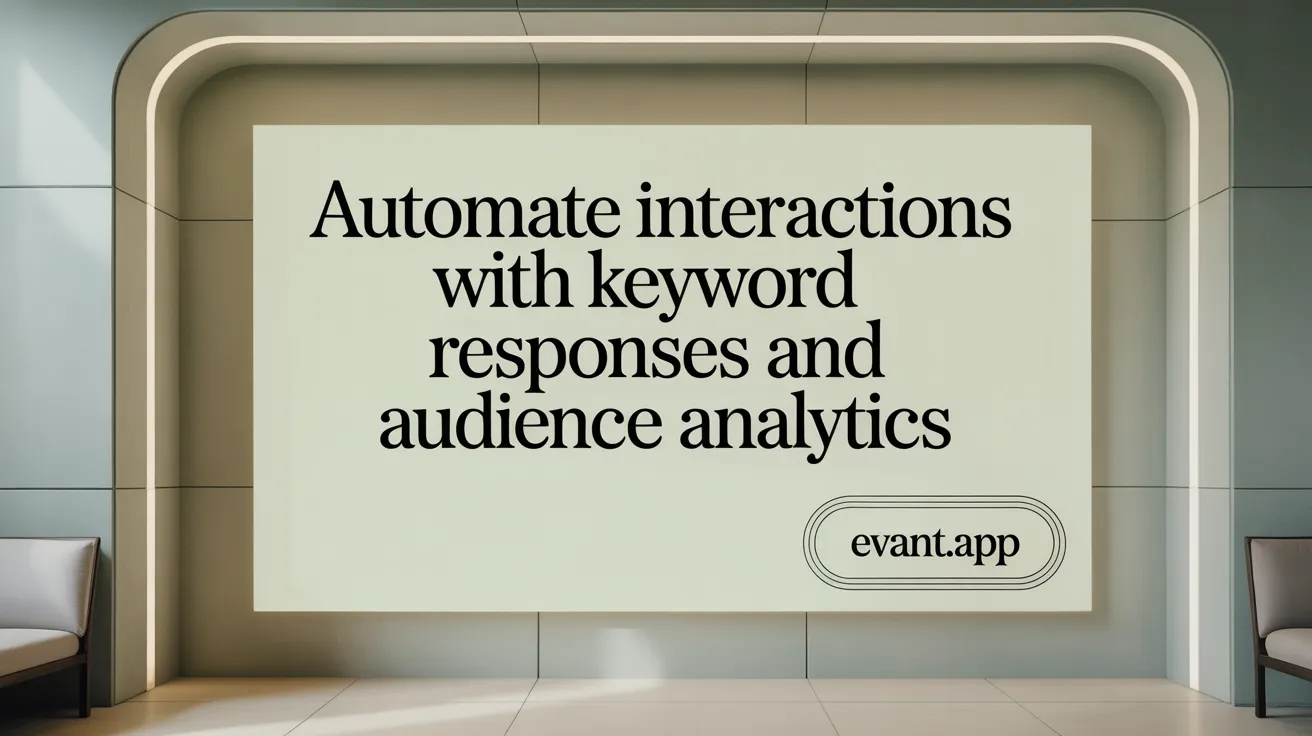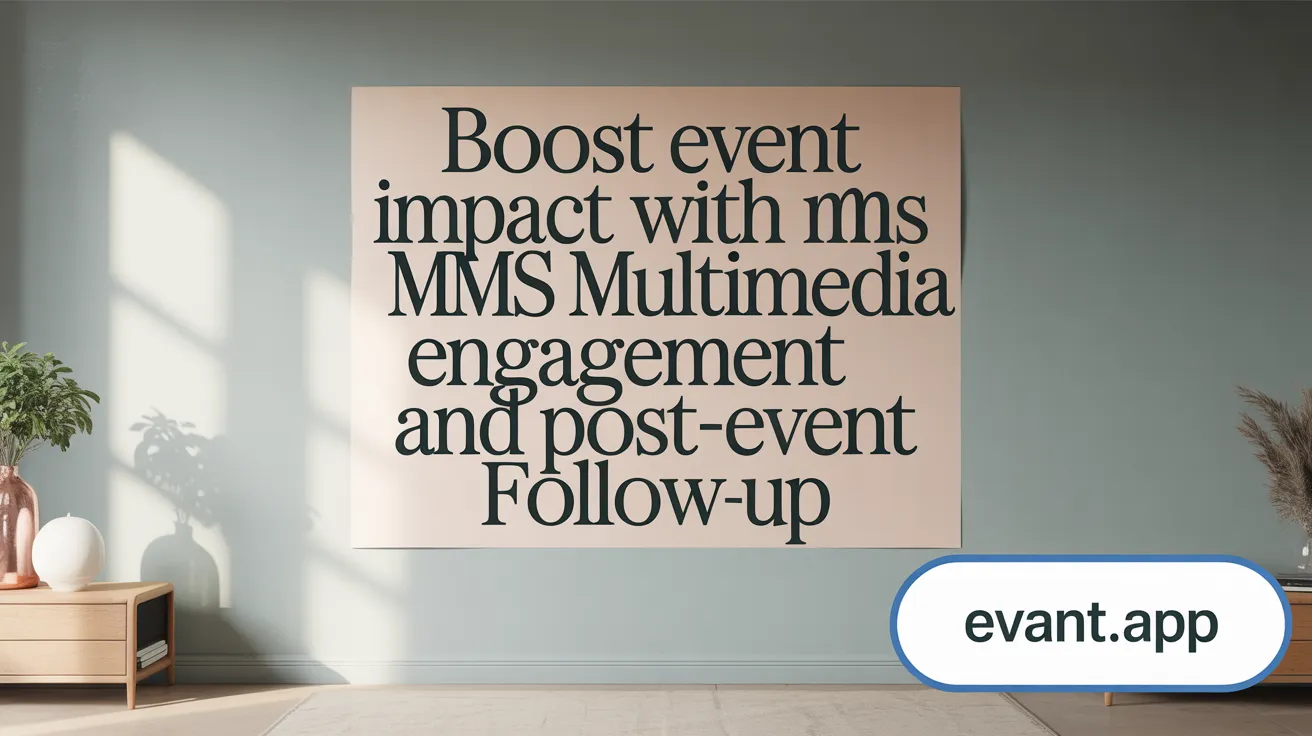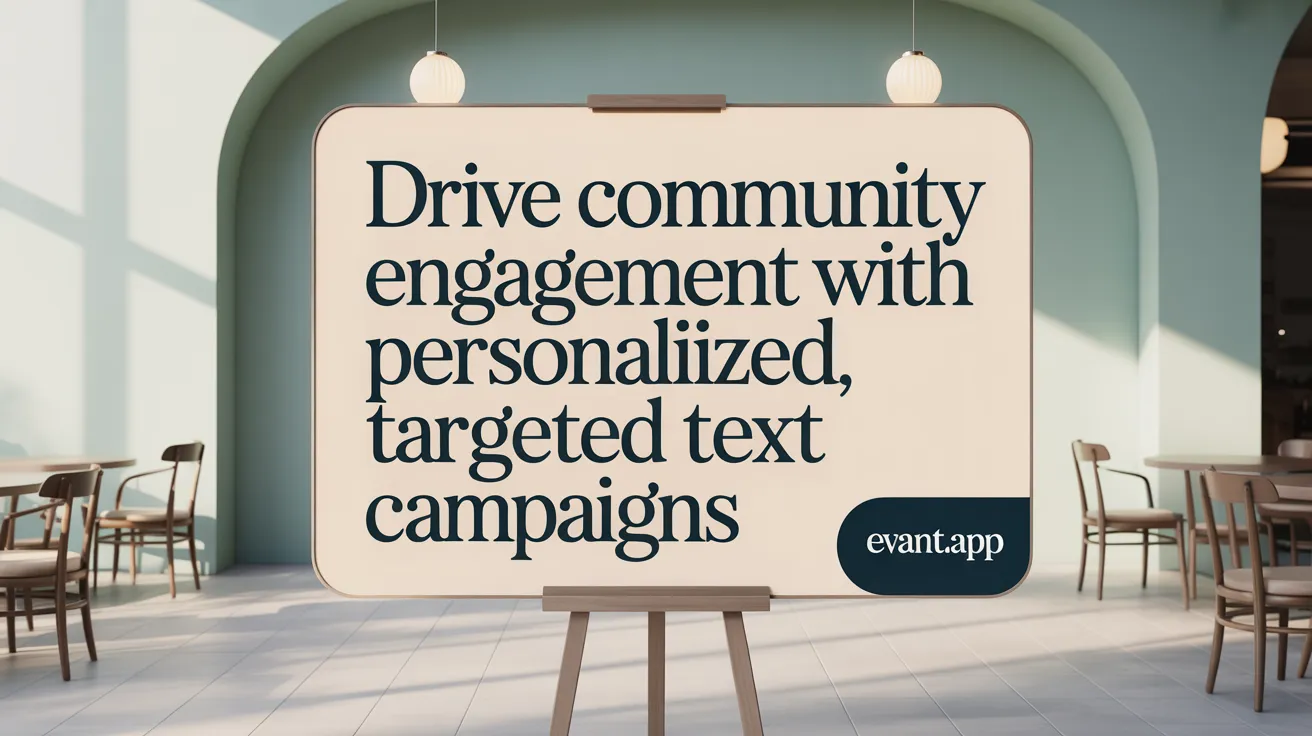Why SMS Platforms are Vital for Community Engagement
Importance of SMS for nonprofits and educational organizations
SMS has become an indispensable tool for nonprofits and educational institutions because of its ability to reach people quickly and directly. Nonprofits use SMS to solicit donations, recruit volunteers, send event reminders, and share mission-critical updates. Educational organizations rely on texting platforms to engage students, parents, and staff with timely notifications like enrollment confirmations, class updates, and emergency alerts.
High open rates and immediate communication benefits
One of the major strengths of SMS is its extraordinary open rate—around 98%, far higher than email. Most text messages are read within minutes, often within three minutes, which is ideal for urgent communications. This immediacy allows organizations to deliver time-sensitive information such as event details, last-minute changes, and volunteer coordination swiftly.
Role of SMS in enhancing community interaction and event participation
SMS platforms enable two-way conversations, personalization, and segmentation, making conversations feel personal and human. This fosters stronger bonds between organizations and their communities. For events, SMS promotes attendance by sending reminders and updates, manages logistics during the event, and facilitates feedback afterward. By integrating SMS with other tools like CRMs, nonprofits and schools can create a streamlined communication strategy that boosts participation and deepens community ties.
Core Functionalities of Community-Oriented SMS Platforms

No barriers to entry such as app downloads
Community-oriented SMS platforms prioritize accessibility by working like regular texting. They use Real 10-digit phone number communication, do not require app downloads, and are easy to set up. This ensures that messages reach recipients instantly without technical hurdles, making engagement seamless and inclusive for all community members.
Two-way communication enabling personal conversations
A defining feature is support for Two-way messaging support, allowing recipients to reply directly. This enables Authentic human-centric communication that feel personal rather than automated. By facilitating real interactions, organizations can build trust and strengthen relationships with their communities.
Personalization and segmentation through data collection
These platforms leverage zero-party and first-party data to enable detailed Segmentation and sub-communities. This allows messaging to be dynamically tailored based on supporter preferences, behaviors, or roles (like donors, volunteers, or students). Data-driven personalization in messaging enhances relevance and engagement, ensuring recipients receive content suited to their interests.
Scalability and automation capabilities
From small groups to large audiences, community SMS platforms support Scalable messaging with automation. Automation tools enable scheduling, triggered responses, and Intelligent message clustering of similar replies to save time while maintaining a personal touch. This balance streamlines communication without losing authenticity.
Integration with CRM and other systems
Robust SMS solutions integrate seamlessly with Advanced audience management features, fundraising platforms, student information systems, and event management tools. These integrations synchronize data and automate workflows, enabling tailored outreach, tracking engagement metrics, and improving coordination for events, donations, or volunteer efforts.
These core functionalities equip nonprofits, educational institutions, and community organizations to engage more effectively, build stronger connections, and manage communications efficiently through SMS.
Ensuring Compliance and Security in Messaging Platforms

Legal compliance including TCPA, 10DLC, GDPR, HIPAA
Messaging platforms must strictly follow legal frameworks such as the TCPA compliance in texting, 10DLC compliance for nonprofits, and legal SMS marketing for nonprofits standards in the U.S., ensuring messages are only sent to consenting recipients. GDPR governs data protection in Europe, requiring transparency and user control over personal data. HIPAA compliance is critical when handling sensitive health information, particularly for nonprofits and educational institutions engaged in healthcare support (HIPAA Compliance).
Data privacy and secure data storage practices
Platforms prioritize secure data storage, utilizing encryption and access controls to protect community members' information. Some services adopt specialized security frameworks, like Aptible Data Security, and limit data collection to only essential user-provided details, allowing full control over data deletion and export.
Role of dedicated short codes and opt-in management
Dedicated short codes enable trustworthy, scalable messaging campaigns, minimizing spam risk and fostering recipient confidence (Dedicated short codes for compliance). Opt-in management features such as keywords, QR codes, and double opt-in secure subscriber consent, preventing unsolicited messages and supporting lawful outreach (Opt-in SMS marketing).
Importance of transparent opt-out options and respectful contact
Clear opt-out instructions and automated unsubscribe processes maintain respect for recipient preferences. Messaging strategies avoid quiet hours and overwhelming frequency to ensure communications feel personal rather than intrusive (SMS legal compliance).
Security protocols in educational and nonprofit contexts
Platforms designed for schools and nonprofits incorporate role-based permissions, encrypted message transmission, and compliance auditing. These measures protect sensitive student and supporter data while enabling effective community engagement (FERPA compliant SMS platforms, Communication compliance laws).
Advanced Audience Management and Personalization Techniques

How Do Segmentation, Tagging, and Sub-Community Creation Enhance Engagement?
Segmentation and tagging allow organizations to categorize their audiences based on interests, behaviors, and demographics. This targeted approach helps in creating sub-communities—smaller, focused groups that receive relevant and customized communication. It enables messages to resonate better, increasing engagement and fostering stronger connections.
What Is Dynamic, Personalized Messaging Using Zero- and First-Party Data?
Dynamic messaging tailors communication content to each recipient by leveraging data collected directly from users (zero-party) and from their interactions (first-party). This personalization makes messages feel human-centric and relevant. For nonprofits and community groups, using personal data responsibly enhances the recipient’s experience and boosts participation rates.
How Do Keyword-Based Automated Responses Support Audience Interaction?
Keyword-based automated responses enable quick, precise replies to common queries or commands sent by community members. These automated responses save time and maintain consistency while still allowing two-way conversations. Partnering this feature with segmentation ensures that only the right audience receives tailored automated feedback.
How Can Stakeholder Maps and Analytics Refine Targeting?
Stakeholder maps visually represent community members based on influence and interests, helping organizers identify key groups and focus points. Analytics offer real-time insights on message performance and audience behavior, allowing continuous refinement. Integrating these tools allows organizations to optimize outreach and engagement efforts efficiently.
| Technique | Purpose | Community Benefit |
|---|---|---|
| Segmentation & Tagging | Categorize audience | Delivers relevant messages |
| Sub-Community Creation | Build focused groups | Enhances targeted engagement |
| Dynamic Personalized Messaging | Customize communication | Increases message relevance and responsiveness |
| Keyword-based Automated Replies | Automate FAQs and commands | Saves time and improves interaction quality |
| Stakeholder Maps & Analytics | Visualize and analyze audience | Improves targeting and engagement optimization |
Integration, Automation, and Analytics for Effective Communication

Seamless API and third-party integration including CRMs and SIS
Modern SMS platforms for community engagement and event management emphasize smooth integration with existing systems such as Customer Relationship Management (CRM) tools and Student Information Systems (SIS). This interoperability allows organizations—whether nonprofits, educational institutions, or event organizers—to synchronize contact data, segment audiences precisely, and execute targeted communication campaigns. For example, platforms like Mogli integrate directly with Salesforce, while higher education SMS tools connect with various SIS platforms, enabling streamlined workflows without manual data entry (Best texting platforms for higher education).
Automation of message scheduling and triggered campaigns
Automation capabilities are fundamental for scaling personalized communication. They enable pre-scheduling of messages and setting up triggered campaigns based on a recipient's actions or milestones, such as event registration, donation confirmations, or volunteer shifts. Automation helps maintain consistent engagement without overburdening staff, allowing for timely reminders, last-minute updates, and follow-ups. Tools in education and nonprofit sectors often support workflows that send appointment reminders or donation acknowledgments automatically (Automated SMS Communications, Element451 automated SMS workflows, Text fundraising for nonprofits).
Real-time analytics and reporting dashboards
Robust analytics and reporting features empower organizations to monitor the effectiveness of their SMS outreach in real time. Dashboards provide insights into delivery success, message open rates, and audience interaction, helping organizers stay aware of campaign progress and adapt strategies as necessary. Platforms also offer sentiment tracking and detailed engagement metrics that inform communication refinement and decision-making (SMS analytics and reporting, Messaging analytics and insights, Community engagement reporting capabilities).
Measuring engagement metrics such as open rates, click-throughs, and responses
Key performance indicators include exceptional open rates averaging around 98%, click-through rates, and direct response times. Measuring these metrics helps organizations assess how well messages resonate, identify audience preferences, and optimize future campaigns. High engagement metrics facilitate better community relationships, improved event attendance, and increased donation conversions (high SMS open rates, SMS marketing effectiveness, SMS for nonprofits open rate.
By leveraging integrated systems, automated messaging, and real-time analytics, organizations can deliver timely, personalized, and measurable communications that enhance participation and strengthen community connections.
Enhancing Event Management with SMS Capabilities

SMS RSVPs, Event Reminders, and Check-ins
Using SMS for event management begins with efficient RSVP collection and timely event reminders. Platforms like CompleteSMS event management SMS tools enable organizers to send out bulk invitations and automated reminders, helping reduce no-shows and ensure attendees are well informed. Mobile check-in applications allow for quick and contactless registration of guests on arrival, streamlining event entry and data management.
Real-time Communication During Events for Logistics and Surveys
SMS facilitates real-time communication that can manage event logistics seamlessly. Organizers can send schedule changes, emergency alerts, or directions directly to attendees and staff. Additionally, SMS-based surveys and polls engage participants on-site, gather instant feedback, and increase interaction, lending organizers flexibility to adapt quickly during events. See more on Instant SMS Communication for Events and Attendees.
Use of MMS for Multimedia Engagement
Multimedia Messaging Service (MMS) capabilities add a creative layer to event communication. By sharing images, videos, or coupons, organizers can boost excitement and participant engagement. MMS helps create a richer, interactive experience beyond basic text messages, enhancing community involvement and the overall event atmosphere. For detailed insights, check SMS Messaging for Events and MMS Engagement.
Post-event Follow-up and Feedback Collection
After events conclude, SMS remains a valuable tool to maintain momentum. Sending thank-you messages, post-event materials, and feedback requests through SMS encourages continuous supporter engagement. Collecting insights via SMS surveys helps organizers assess success and identify improvement areas for future events. More about this is discussed in Gather Event Feedback by SMS.
By integrating these SMS solutions for event planning, event managers can streamline communications, boost attendance, and foster meaningful connections with their community throughout the event lifecycle.
Innovations and Future Trends: Rich Communication Services (RCS)

What Makes Rich Communication Services (RCS) the Next Generation of SMS?
Rich Communication Services (RCS) upgrades traditional SMS by integrating interactive multimedia directly into messaging apps without requiring additional downloads. This means nonprofits and community groups can send vibrant, app-like messages featuring images, videos, GIFs, and documents, enhancing engagement beyond plain text. Learn more about RCS for Nonprofits.
How Does Verified Sender Branding Build Trust?
RCS supports verified sender branding, displaying logos and checkmarks to confirm authenticity. For nonprofits, this verification builds supporter trust by reassuring them messages come from a credible source, reducing skepticism and fraudulent messages. Explore how Rich Communication Services in SMS enhance nonprofit communications.
How Does RCS Enable Richer Two-Way Communication?
With Rich Communication Services (RCS), communication is real-time and interactive. Features like typing indicators and live chat enable dynamic conversations. Quick-reply buttons and carousels allow supporters to respond easily, making dialogues with volunteers, donors, and community members more engaging and personal. Discover Two-way conversations in RCS and how they boost engagement.
In What Ways Does RCS Improve Fundraising and Event Registration?
RCS streamlines processes by embedding call-to-action buttons inside messages. Supporters can donate or register for events within the conversation window itself, minimizing friction, boosting conversion rates, and providing a seamless experience. This interactive flow enhances fundraising and attendance outcomes. See examples of Streamlining donations with RCS for nonprofits.
How Does Broader Device Support Expand Accessibility?
Available now on most Android devices and expanding soon to iOS, Rich Communication Services (RCS) delivers richer communications across a wide user base without needing extra apps. This broad accessibility helps nonprofits reach diverse community members more effectively, maintaining inclusivity in their outreach efforts. Learn about RCS accessibility on Android and iOS.
User-Friendly Design and Support for Diverse User Needs

Multi-User Capabilities for Team Collaboration
Effective community SMS platforms often support multi-user SMS platform features, enabling teams to collaborate seamlessly. This allows multiple staff members or volunteers to manage communications collectively, ensuring timely responses and coordinated outreach without overlap or confusion.
User-Friendly Interfaces with Minimal Technical Barriers
Platforms designed with simplicity in mind reduce technical barriers, allowing users with varying technical skills to set up and run SMS campaigns quickly. Low-code SMS marketing solutions and real-time dashboard features empower nonprofits and community organizations to focus on engagement rather than technology.
Support Features: Free Trials and Onboarding Assistance
Many SMS platforms offer SMS platform free trials to help organizations evaluate their suitability before committing. Onboarding support and dedicated customer service help users get started efficiently, ensuring they can leverage the platform's capabilities fully and with confidence.
Accessibility Considerations
Inclusive design features like multilingual messaging enable communication across diverse communities, breaking language barriers. Additionally, accessibility options such as text-to-speech cater to residents with visual impairments or literacy challenges, making SMS outreach more equitable and broad-reaching.
Practical Applications: How SMS Platforms Boost Nonprofit and Education Outcomes

How SMS Supports Fundraising, Volunteer Recruitment, and Donor Engagement
SMS platforms are powerful tools for nonprofits to enhance fundraising efforts through personalized, targeted messaging. They enable organizations to send donation requests, provide instant confirmations, and express gratitude, helping strengthen donor relationships. Platforms like Tatango, Funraise, and text fundraising for nonprofits specialize in SMS fundraising by supporting automated replies and mobile donation forms. Additionally, SMS recruits volunteers efficiently by sending schedule confirmations, emergency alerts, and recruitment campaigns, improving coordination and retention.
Enhancing Student Communication and Retention in Education
Educational institutions leverage SMS to communicate timely and personalized messages, improving student engagement and success rates. Platforms such as Mogli, Element451, and Best texting platforms for higher education allow for two-way conversations, appointment reminders, and automated workflows that manage milestones like enrollment and attendance. These tools help reduce absenteeism, give real-time support, and foster meaningful connections, which correlate with increased retention and academic outcomes.
Campaign Examples: Event Promotion, Feedback Surveys, and Donation Acknowledgments
SMS campaigns are widely used to promote events, send reminders, and boost attendance. Examples include event invitations with registration confirmations, last-minute alerts during gatherings, and thank-you messages afterward. Nonprofits also use SMS surveys and polls to collect supporter feedback, aiding continuous improvement. Education sectors use SMS for attendance reminders and exam notifications. The immediacy of SMS—with open rates nearing 98% and quick response times—ensures effective communication. For more, see SMS solutions for event planning, Instant SMS Communication for Events, and SMS for nonprofits open rate.
Building Engaged Communities through Personalized Communication
Personalization and segmentation are central to SMS strategies for community engagement. Platforms support audience filtering based on interests, donation history, or student status, enabling tailored messages. Two-way messaging invites dialogue, making supporters and students feel heard and valued. Integration with CRM systems ensures seamless relationship management. By providing real-time updates, motivational content, and inclusive language options, SMS builds stronger, more responsive communities. Learn more about SMS strategies for community engagement and No barriers to entry messaging platforms.
Together, these practical SMS applications empower nonprofits and educational institutions to streamline outreach, enhance participation, and foster meaningful relationships that drive mission success and student achievement.
Choosing the Right SMS Platform to Strengthen Your Community
Balancing Features, Compliance, Ease of Use, and Integration
Selecting an SMS platform involves weighing its capabilities against your nonprofit’s unique needs. Look for features like two-way messaging, audience segmentation, automation, and multimedia support to craft personalized communications that resonate. Equally important is compliance—platforms must adhere to guidelines like TCPA and 10DLC to protect both the organization and its supporters.
Ease of use matters, especially for nonprofits with limited technical resources. Platforms offering user-friendly interfaces and integrated tools reduce training time and empower staff to manage outreach efficiently.
Tailoring Platform Choice to Organizational Goals
Identify your core objectives—whether boosting event attendance, improving volunteer coordination, or increasing donations. Choose a platform that aligns with these goals and integrates smoothly with your existing CRM or fundraising systems for streamlined workflows and enhanced data insights.
Future-Proofing Communication with Emerging Technologies
Invest in SMS platforms adopting innovations like Rich Communication Services (RCS) to enhance messages with interactive elements, verified sender branding, and multimedia content. These advances not only enrich supporter engagement but also pave the way for measurable, trustworthy, and dynamic community connections.
Related Blogs


RSVP Tools: Best Options, Google RSVP Limitations & Why Text Wins
Michael PedoeemExplore the best RSVP tools, Google RSVP’s limitations, and why text RSVP is the most efficient for event planning with instant confirmations and reminders.


My School SMS: Bridging the Gap between Schools, Parents, and Students
Michael PedoeemMy School SMS - What's it all about


Ready to transform your community









